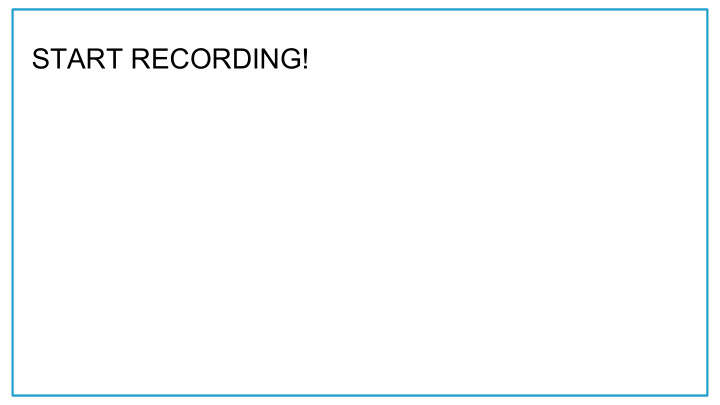



START RECORDING!
June 2018 MULTIPLE DISABILITIES + MUSIC THERAPY
What are multiple disabilities? IDEA definition ...means concomitant [simultaneous] impairments (such as intellectual disability-blindness, intellectual disability- orthopedic impairment, etc.), the combination of which causes such severe educational needs that they cannot be accommodated in a special education program solely for one of the impairments. The term does not include deaf- blindness. Having more than 1 disability does not automatically = multiple disabilities 1. Specific Learning Disability 7. Deafness 2. Other Health Impairment 8. Hearing Impairment 3. Autism Spectrum Disorder 9. Orthopedic Impairment 4. Emotional Disturbance 10. Intellectual Disability 5. Speech or Language Impairment 11. Traumatic Brain Injury 6. Visual Impairment 12. Multiple Disabilities
Common Characteristics of Students with MD Not an all inclusive list Medical care and round the clock nursing Feeding tubes or trachs Lots of equipment: wheelchairs, special seating, wedges for proper positioning Ongoing support for activities of daily living for the duration of their lives (toileting, dressing, feeding, transportation, etc)
What is Active learning? Active Learning is an approach based on the work of Dr. Lilli Nielsen. It is not just a piece of equipment, such as a "Little Room" or a HOPSA dress, but rather it refers to a total approach, for instructing individuals with severe multiple disabilities. It contains an assessment, a curriculum, specifically-designed equipment, and instructional strategies that support learners to be active participants in their surroundings. This approach is closely tied to evidence-based research, such as the work of Jean Piaget's developmental stages of learners. It views the child's development wholistically, including not only motor, cognitive, and sensory skills, but also social and emotional development.
Overview of Active Learning ● Emphasizes that all individuals learn best by active participation. ● All activity, especially in the earliest stages of development, "wires our brains" and establishes critical foundational concepts and skills necessary for all future learning. ● Individuals with MD are at risk to be a passive rather than active participant, ● Relying on adults to provide activity rather than seeking it out on their own. ● Every child/adult with special needs is unique. Programming and intervention must reflect individuality. ● Creates a developmentally appropriate and enriched environment so that children and adults with multiple special needs become active learners.
Dr. Lilli Neilson (1926-2013) As a developmental psychologist and preschool teacher , Dr. Nielsen worked for over 43 years with children and adults with multiple disabilities . She was a special educator and advisor at Refsnaesskolen, the National Institute for Blind and Partially Sighted Children and Youth in Denmark. She was the second of seven children, four of whom were born blind. Her experiences both professionally and personally led to her lifetime of work with blind children and adults with multiple special needs. Internationally recognized for her theory of Active Learning , Dr. Nielsen authored several books and essays, conducted research, lectured around the world, and developed an assessment and curriculum for individuals with multiple disabilities. She invented perceptual aides and equipment that promote skill development, and was awarded the Knight Order of the Dannebrog for her lifetime of work in the field of special education.
Equipment ● Essef Board ● HOPSA dress ● Little Room ● Resonance Board ● Multi Function Activity Table ● Sensory Room
Materials ● Peg Board ● PVC pipe ● Things laying around your house! ● String ● Velcro ● Elastic
Technology ● Switches (https://www.ablenetinc.com) ● AAC devices (LAMP, Proloquo) ● Pictures/Objects/PECS (Boardmaker) ● iSpeak button for iPad
Common Goals ● Eye contact ● Choice Making ● Improved affect ● Increased engagement ● Grasping Items for increased duration ● Purposeful movement/reaching for desired items ● Object Identification
Intervention Ideas ● Fill in the Blank with Repetitive Songs using a switch ● Group Singing ● Instrument Play ● Drumming ● Singable Stories with Story Bag ● Songs about object identification ● Use of guitar/autoharp/sensory instruments for increased vibroacoustic input ● Turn any teen song into a book using textured items/objects
Adaptations ● A Day’s Work: http://www.adaysworkmusiceducation.com ● Instruments holders/clamps ● Mallet Holders from West Music ● EazyHold ● Buncher
App Accessible Instruments ● Skoog: http://skoogmusic.com ● Specdrums: https://www.specdrums.com
Working in the Classroom Setting ● Blanket Service ● IEP - Qualifying for Services ● Setting Classroom Expectations What to Expect from Clients ● Slow progress (over years even) ● Improved quality of life and increased affect ● Significant responses to IEP goals as written in the student’s plan.
Q & A How to get your credit: https://goo.gl/forms/oeQYGh1ohDz1cVnX2
Recommend
More recommend